
Mao Zedong was a Chinese politician, Marxist theorist, military strategist, poet, and revolutionary who was the founder of the People's Republic of China (PRC). He led the country from its establishment in 1949 until his death in 1976, while also serving as the chairman of the Chinese Communist Party during that time. His theories, military strategies and policies are known as Maoism.

The Long March was a military retreat by the Chinese Red Army from advancing Nationalist forces during the Chinese Civil War in 1934 through 1936.
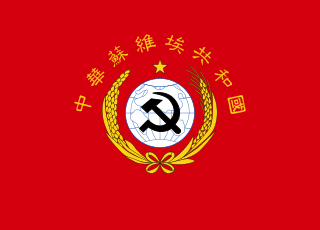
The Chinese Soviet Republic (CSR) was a state within China, proclaimed on 7 November 1931 by Chinese Communist Party (CCP) leaders Mao Zedong and Zhu De in the early stages of the Chinese Civil War. The discontiguous territories of the CSR included 18 provinces and 4 counties under the communists' control. The CSR's government was located in its largest component territory, the Jiangxi Soviet. Due to the importance of the Jiangxi Soviet in the CSR's early history, the name "Jiangxi Soviet" is sometimes used to refer to the CSR as a whole. Other component territories of the CSR included the Northeastern Jiangxi, Hunan-Jiangxi, Hunan-Hubei-Jiangxi, Hunan-Western Hubei, Hunan-Hubei-Sichuan-Guizhou, Eyuwan, Shaanxi-Gansu, Sichuan-Shanxi, and Haifeng-Lufeng Soviets.

Edgar Parks Snow was an American journalist known for his books and articles on communism in China and the Chinese Communist Revolution. He was the first Western journalist to give an account of the history of the Chinese Communist Party following the Long March, and he was also the first Western journalist to interview many of its leaders, including Mao Zedong. He is best known for his book, Red Star Over China (1937), an account of the Chinese Communist movement from its foundation until the late 1930s.
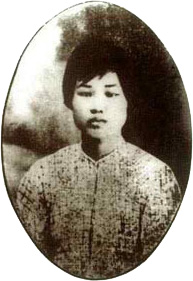
Yáng Kāihuì was the second wife of Mao Zedong, whom he married in 1920. She had three children with Mao Zedong: Mao Anying, Mao Anqing, and Mao Anlong. Her father was Yang Changji, the head of the Hunan First Normal School and one of Mao's favorite teachers.
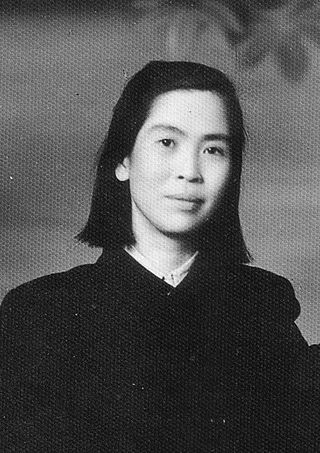
He Zizhen was the third wife of Chairman Mao Zedong from 1928 to 1937. She was one of the few female soldiers in the First Front Red Army that went on the Long March.

Israel Epstein was a Polish-born Chinese journalist and author. He was one of the few foreign-born Chinese citizens of non-Chinese origin to become a member of the Chinese Communist Party.
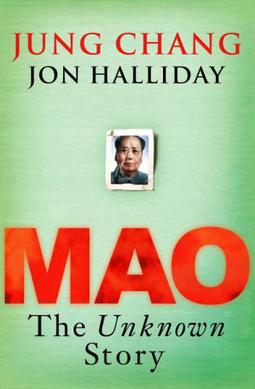
Mao: The Unknown Story is a 2005 biography of the Chinese communist leader Mao Zedong (1893–1976) that was written by the husband-and-wife team of the writer Jung Chang and the historian Jon Halliday, who detail Mao's early life, his introduction to the Chinese Communist Party, and his political career. The book summarizes Mao's transition from a rebel against the autocratic Kuomintang government to the totalitarian dictator over the People's Republic of China. Chang and Halliday heavily cover Mao's role in the planning and the execution of the Great Leap Forward and the Cultural Revolution. In that capacity, they note that Mao is responsible for an unprecedented death toll during peacetime that ranged from 40 to 70 million people.
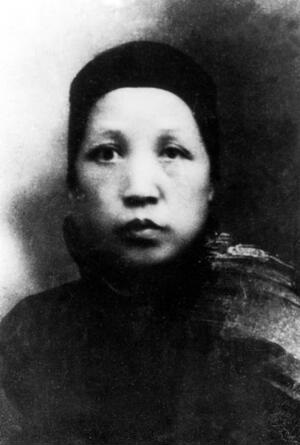
Wen Qimei was the mother of Mao Zedong.
Luo Yixiu, a Han Chinese woman, was the first wife of the later Chinese communist revolutionary and political leader Mao Zedong, to whom she was married from 1908 until her death. Coming from the area around Shaoshan, Hunan, in south central China – the same region as Mao – her family were impoverished local landowners.
The Wartime perception of the Chinese Communists in the United States and other Western nations before and during World War II varied widely in both the public and government circles. The Soviet Union, whose support had been crucial to the Chinese Communist Party from its founding, also supported the Chinese Nationalist government to defeat Japan and to protect Soviet territory.
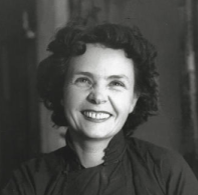
Helen Foster Snow was an American journalist who reported from China in the 1930s under the name Nym Wales on the developing Chinese Civil War, the Korean independence movement and the Second Sino-Japanese War.
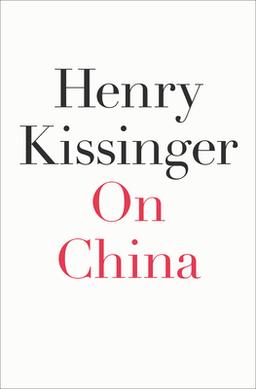
On China is a 2011 non-fiction book by Henry Kissinger, former National Security Adviser and United States Secretary of State. The book is part an effort to make sense of China's strategy in diplomacy and foreign policy over 3000 years and part an attempt to provide an authentic insight on Chinese Communist Party leaders. Kissinger, considered one of the most famous diplomats of the 20th century, played an integral role in developing the relationship between the United States and the People's Republic of China during the Nixon administration, which culminated in Nixon's 1972 visit to China.

Stuart Reynolds Schram was an American physicist, political scientist and sinologist who specialised in the study of modern Chinese politics. He was particularly well known for his works on the life and thought of Mao Zedong.

Mao Yichang or Mao Rensheng was a Chinese farmer and grain merchant who achieved notability as the father of Mao Zedong. The nineteenth generation of the Mao clan, he was born and lived his life in the rural village of Shaoshanchong in Shaoshan, Hunan Province.
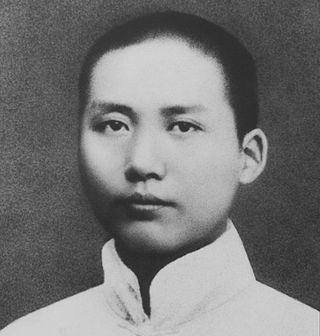
The early life of Chinese revolutionary and politician Mao Zedong covered the first 27 years of his life, from 1893 to 1919. Born in Shaoshanchong, Shaoshan in Hunan province, Mao grew up as the son of Mao Yichang, a wealthy farmer and landowner. Sent to the local Shaoshan Primary School, Mao was brought up in an environment of Confucianism, but reacted against this from an early age, developing political ideas from modern literature. Aged 13 his father organised a marriage for him with Luo Yigu, the daughter of another land-owning family, but Mao denounced the marriage and moved away from home.

Liu Shaoqi was a Chinese revolutionary and politician. He was Chairman of the NPC Standing Committee from 1954 to 1959, first Vice Chairman of the Chinese Communist Party from 1956 to 1966 and Chairman of the People's Republic of China, the head of state, from 1959 to 1968, during which he implemented policies of economic reconstruction in China. For 15 years, Liu held high positions in Chinese leadership, behind only Chairman Mao Zedong and Premier Zhou Enlai. Although originally considered as a successor to Mao, from 1966 onward, Liu was criticized and then purged by Mao. Liu was arrested and imprisoned in 1967. He was forced out of public life and was labelled the "commander of China's bourgeoisie headquarters", China's foremost "capitalist-roader", and a traitor to the revolution. He died in prison in 1969 due to complications from diabetes.

China Misperceived: American Illusions and Chinese Reality is a non-fiction book by the American sinologist and cultural anthropologist Steven W. Mosher.

Ideology and Organization in Communist China is a 1966 book by the American sociologist and sinologist Franz Schurmann that offers a sociological analysis of the Chinese Communist revolution It was first published by University of California Press in 1966, then in enlarged editions in 1968 and 1971. Schurmann used the sociological tools developed by Max Weber to analyze Mao Zedong's "dialectical conception of Chinese society" and how Mao structured his organizational approach to the Chinese Communist Party and the government.
The Revenge of Heaven, subtitled Journal of a young Chinese, narrates the story of a sixteen/seventeen year old high-school student from Amoy in Southern Fujian, People's Republic of China (PRC), written by two US-American scholars.


















